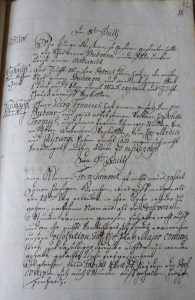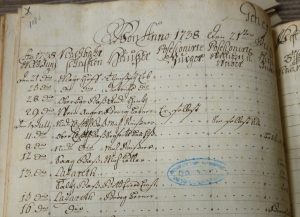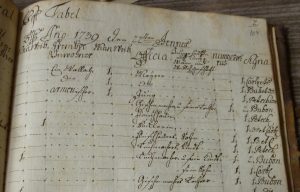- Project code: ID: PFE-550-UBB
- Contract no: nr.21 PFE/ 30.12.2021
- Fellowship financed by the Babeş-Bolyai University through the project “The STAR-UBB academic network of excellence (STAR-UBB-N)”/ Fellowship finanţat de Universitatea Babeş-Bolyai prin proiectul „Reţeaua academică de cercetare de excelenţă STAR-UBB (STAR-UBB-N)”
The project aims to chart the progress and effects of the 1738-1739 plague epidemic in Hermannstadt, the capital city of the Habsburg province of Transylvania and one of the area’s most sizeable cities. Starting form a dedicated register kept by the urban authorities to track precisely where, how, and whom the plague affected, the project captures and reconstitutes the dynamic aspects of this phenomenon. It also engages with the less visible aspects of the epidemic, namely its effects on urban inequality in terms of wealth and income.
- It will construct a database architecture to house the data from the 1738-1739 plague register. This architecture will encompass both the narrative (image 1) and the table-based sections of the register (image 2), which complement each other. To increase the potential of the resulting datasets, they will be enriched with several extant data sources for the same period, stemming from the 1720 and 1750 fiscal conscriptions, the marriage & birth records for the Lutheran parish in Hermannstadt/Sibiu, and the probate registers kept by the urban authorities.
- It will examine the spread of the plague from a spatial perspective, and trace its effects and potential mortality clusters based on factors such as individuals’ social and occupational status, tax levels, geographical provenance, wealth composition, etc.
- It will trace the effects of the plague on the urban social-occupational structure and the anatomy of urban wealth and income inequality.

Section of plague register kept by urban authorities of Hermannstadt/Sibiu, 1738-1739, fol. 12r, Sibiu County Branch of the National Romanian Archives 
Extract from the tabular section of the same plague register, Hermannstadt, 1738-1739, fol. 108r 
Extract from the tabular section of the same plague register, Hermannstadt, 1738-1739, fol. 108r